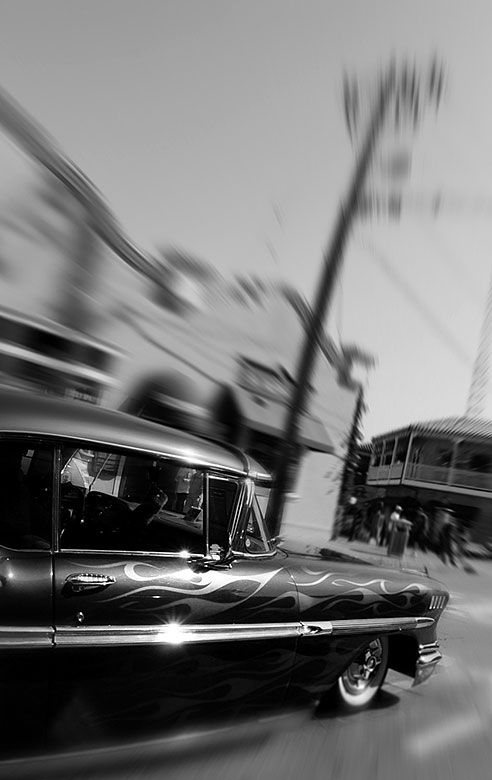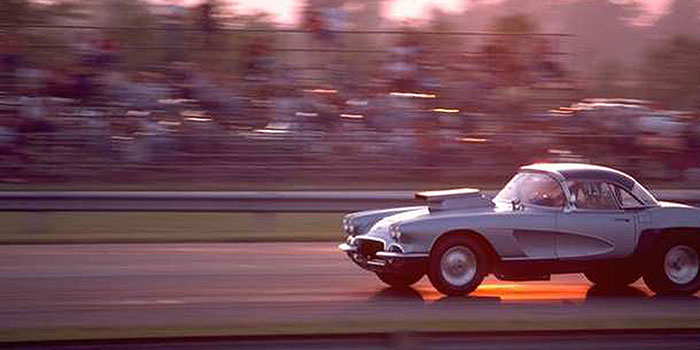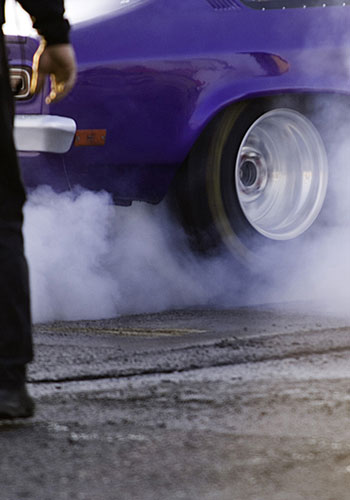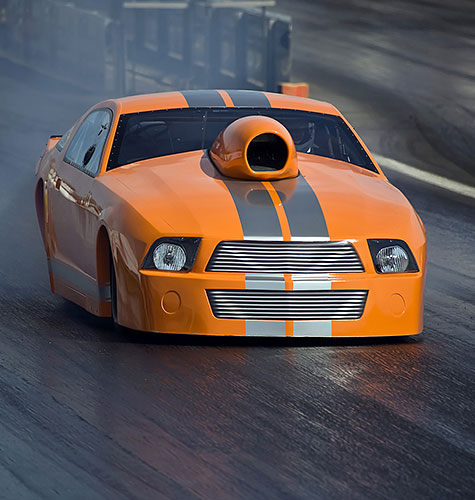



History Of Drag Racing
- ArticlesandContent.com (CIRCA 2005)
- /
- Oct 8, 2021 (written 2005)
The history of drag racing reveals that this particular sport is rooted in earlier illegal practices; drag racing slowly evolved from illegal races held on back or rural roads during the 1940s and 50s.
Some historians even trace the sport back to the 1930s where then young hot rod racers would race in California. At the time, teens enjoyed “trick” up or soup up their vehicles so they could boast about their impressive mechanical abilities. Thus, drag racing started out on the streets as illegal matches between two drivers trying to cover a short distance at the fastest speed.
Drag Racing: Its Origins
Today’s drag races involve covering a quarter mile of distance. The distance is chosen for a number of reasons; first, it was easiest to judge such a distance on the back roads in the illegal matches that were once conducted. Further, the drivers of cars that were being raced on back roads were somewhat safer if they covered short distances; these races were conducted at high speeds so the longer the distance, the more danger the race involved. At the time, rebuilt cars were capable of achieving at least 100 miles per hour on a quarter mile. In the 1940s and 1950s, a variety of novels that were mass marketed, like Hot Rod authored by Henry Gregor Felson, made the rebellious nature of hot-rodding and back road racing attractive to many teens. Despite being warned about the various dangers, teens had a “need for speed,” and loved the glamorized depiction of hot rodding that such novels portrayed.
Some promoters, realizing the appeal of drag racing, erected drag racing strips in the 1950s where it proved legal to conduct such races. The expense of building a strip was little and they proved relatively easy to build since all that was required was a layer of a half a mile of asphalt. The lane was created to be two lanes wide, just like the roads that races were occurring on in rural areas. Instead of a quarter mile, the strip was made a half mile long to allow form room to begin and end the race safely. Promoters included seating areas for spectators, a clocking device for timing racers, and they held the races on weekends when the weather proved ideal. The creation of early drag racing strips was appreciated by law officials as it gave drag racing enthusiasts a safe place to engage in the pass time and made the back roads in rural areas safer too. Drag racing events were broken down into different classes to: this was done to ensure the racing was always fair. Cars with similar body constructions were raced against each other to ensure that the cars that were being raced all had the same type of acceleration levels.
Drag Racing: Its Evolution
In the year 1943, Wally Parks help to establish drag racing’s most influential and successful governing organization; he proved instrumental in helping to make the sport a legitimate pastime for professionals and amateurs alike. Parks, a hobbyist and writer, founded the National Hot Rod Association, commonly identified as the NHRA. He served as Chairman of the Board and the President of the organization. In the late 1940s, he also helped to establish Hot Rod Magazine as well as Motor Trend Magazine. Through his position as the editor of Hot Rod Magazine, he encouraged safety in the sport, and he helped to further promote the sport outside the boundaries of the United States. He had organized tours to educate others about the sport in England and Australia during the 1960s. Parks also helped in establishing Speed Week hosted in the Bonneville Salt Flats in the late 1940s.
In the year 1950, the very first drag strip created was created in Southern California on an airfield: it was aptly named the Santa Ana Drags. The National Hot Rod Association began hosting races in the early 1950s in Pomona California and by 1954; the organization staged the very first national drag racing event, aptly called The Nationals hosted in Kansas. Today, the NHRA has an astounding 80000 members, 35000 licensed competitors, 140 tracks, and it hosts 5000 different events. By the 1970s, rear engine cars were introduced: this was an innovation brought about as a natural result of safety. The vehicle was designed by Don Garlits, who himself had endured an injury when a front located engine had exploded and cause him to lose part of his right foot.
The history of drag racing reveals that eventual changes had to be made to the rules of professional and amateur drag racing; changes were also called for when vehicles with fiberglass bodies were created. The necessary changes included the demand for fire protective clothing for drivers and roll cages so that the driver would not be injured during an accidental roll over. While the sport of drag racing has never achieved the tremendous popularity of NASCAR racing or the Indianapolis 500, it is a sport that proves more appealing to professional and amateur mechanics looking to show off their knowhow. It also appeals to dragsters looking to display their impressive skills behind the wheel and their ability to control and maneuver a vehicle that can sometimes exceed three hundred miles per hour on the quarter mile.
Additional rules had to be implemented in order to improve break cooling too; since these cars travel at high speeds there is a lot of friction during brake maneuvers. Eventually, fenders on the cars were eliminated to promote easier cooling of the brakes. Since the cars proved lighter, they were aerodynamic and they put less pressure on the brake system when it was implemented. In addition, a lighter body ensured greater acceleration speeds could be achieved. Finally, with the absence of fenders, if the vehicle required a rapid tire change such a change could be easily performed.